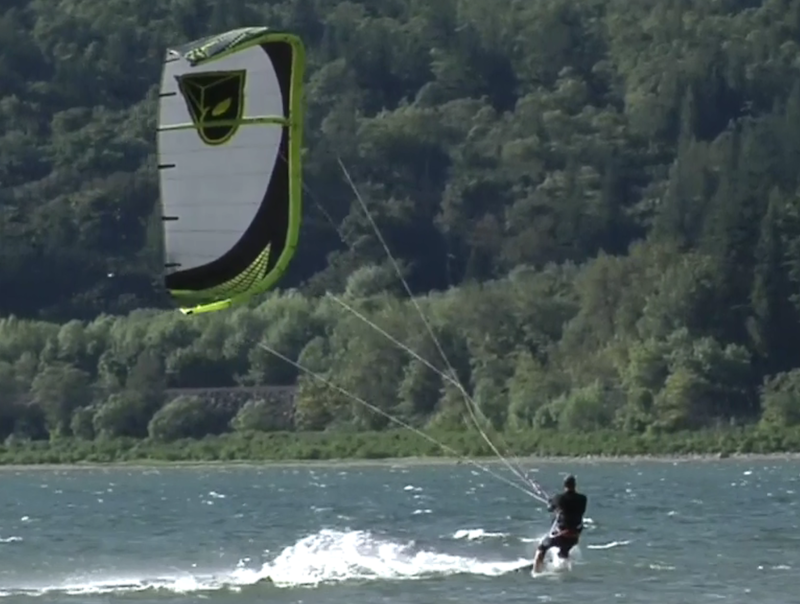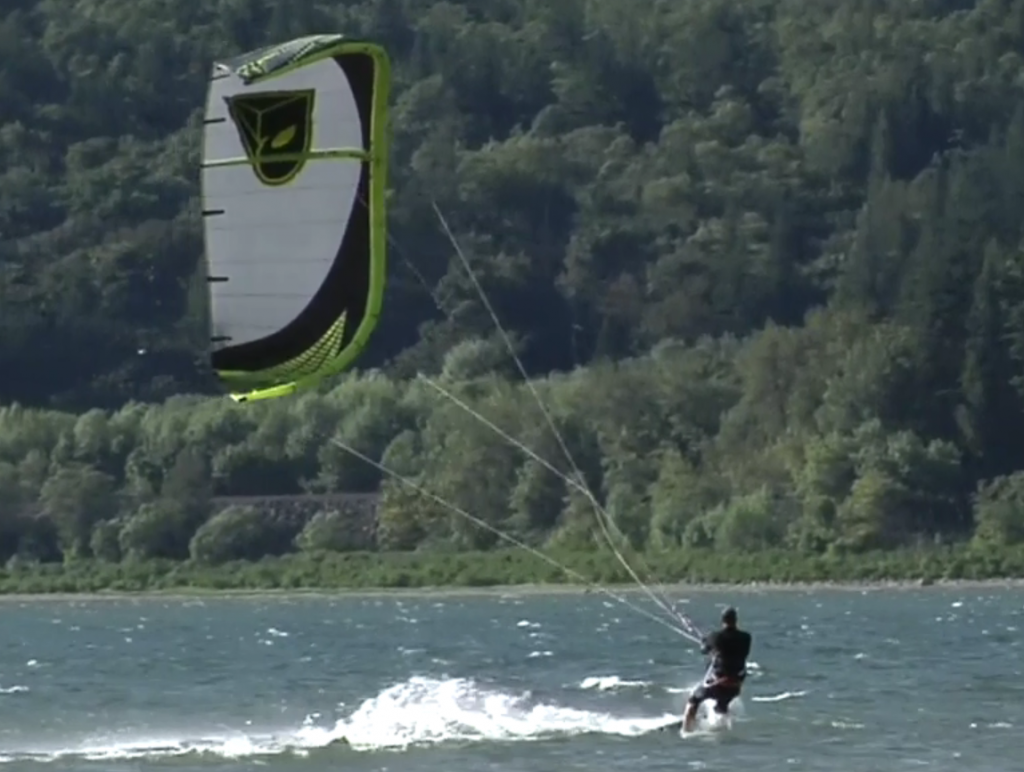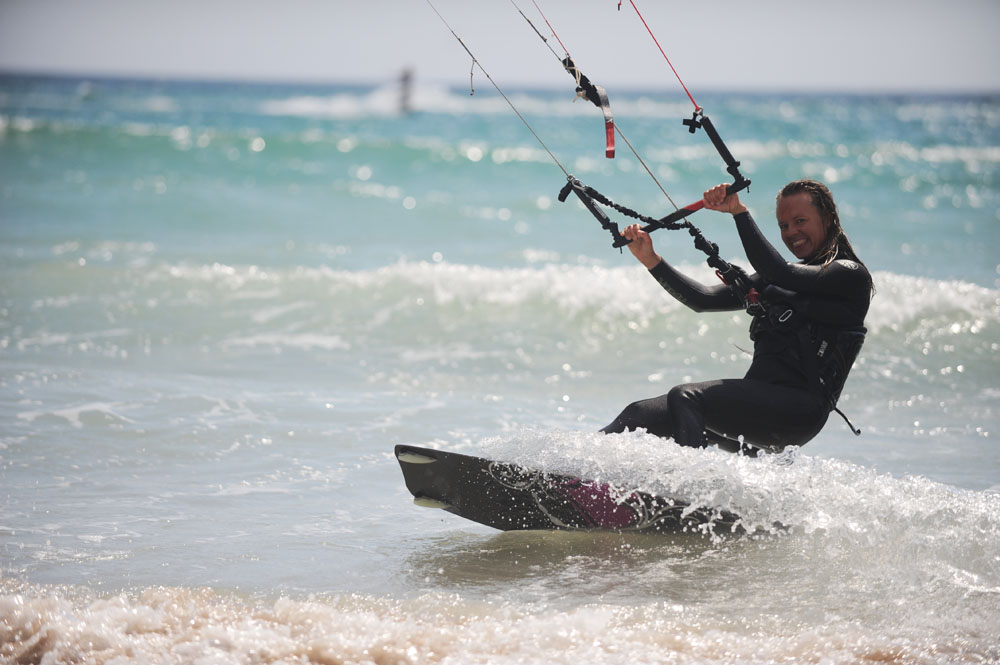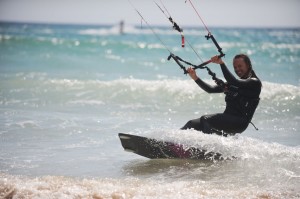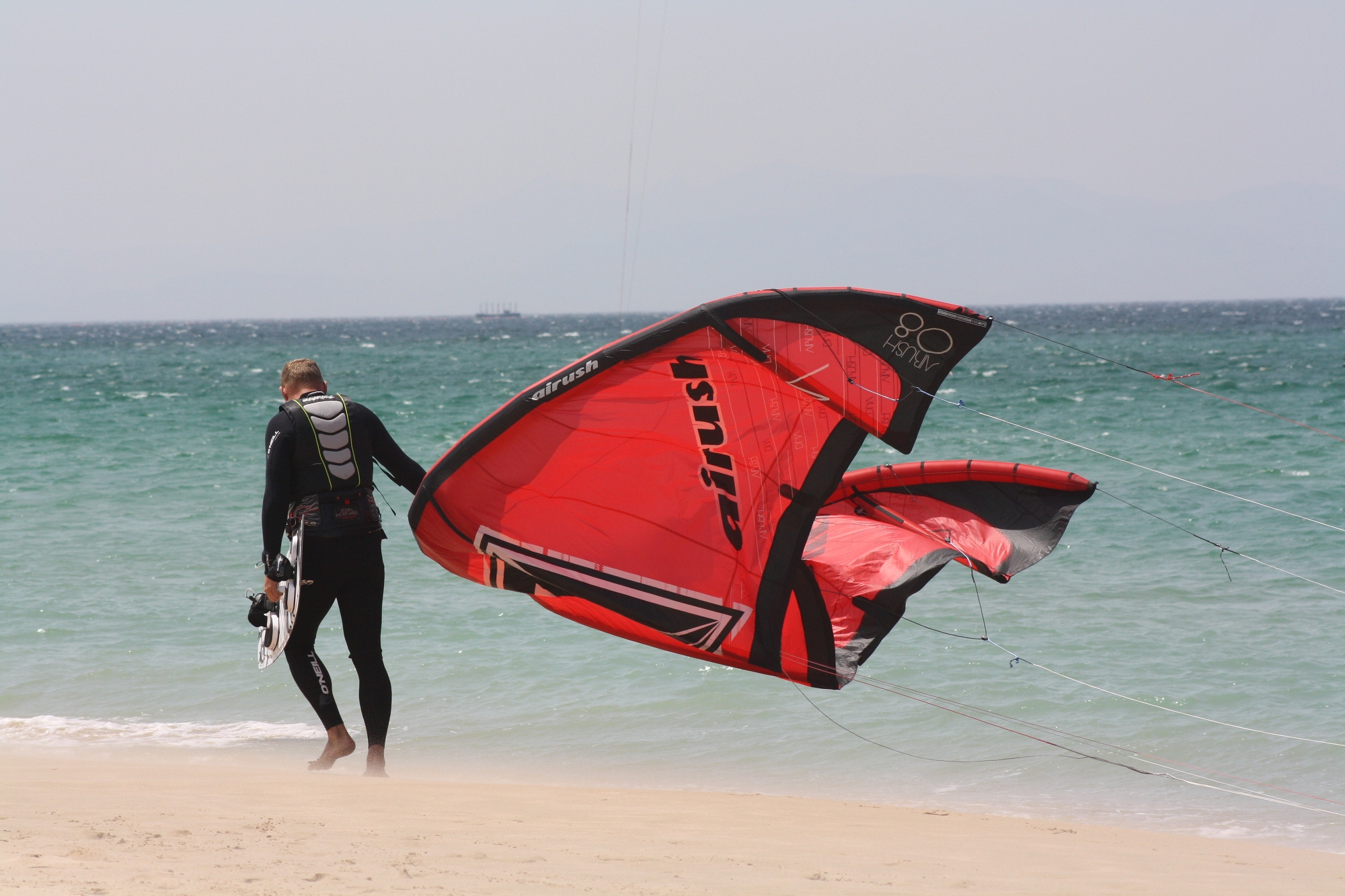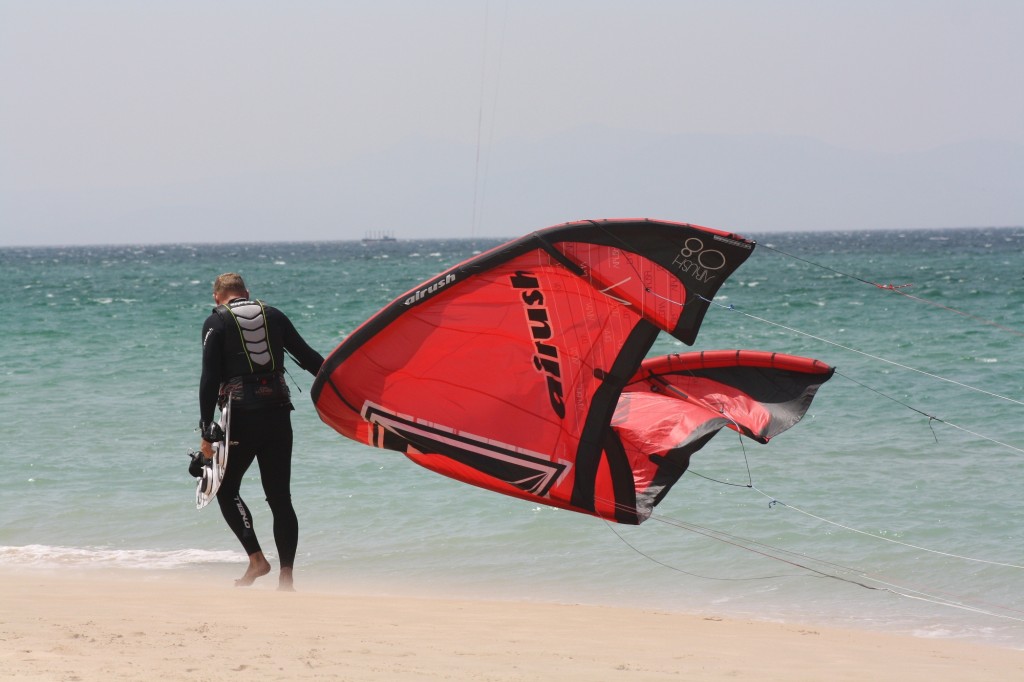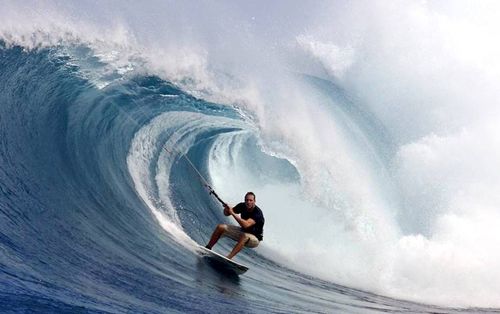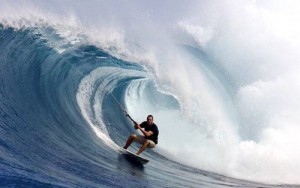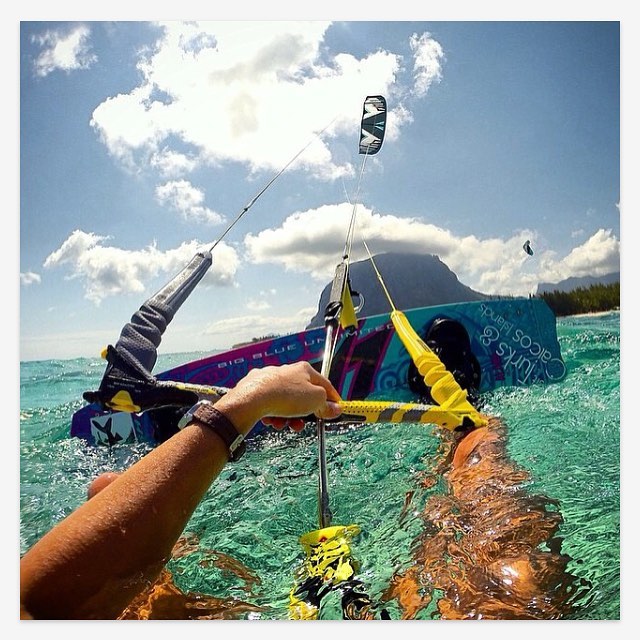
I can’t breathe.
Darkness envelops me as every sinew in my body fights against the pull.
I still can’t breathe.
I don’t know where I am as the pressure develops. My heart beats faster; panic sets in.
My body spins like a rag doll in a washing machine, tumbling and tumbling. What’s this, dizziness now, through lack of oxygen, great…how long have I not been breathing, it feels like hours, days, weeks even.
I battle harder and harder before suddenly, I see light at the end of the tunnel.
An opening. A chance to breathe, to stay alive and I’m free…
Finally, I have my wetsuit on!

It’s safe to say I wasn’t born to Kite Surf!
Which surprises your author, I’m a man who likes to think he can do most things, and without fear. I am a man who once tried to body surf Pipeline for instance for the ‘craic’ before getting rightfully, and with hindsight thankfully, chased out the sea by some annoyed surfers! But with kite surfing not only couldn’t I do it…it scared the b’jesus out of me!
It looked so simple.
Standing on the beach that first day, watching the riders in the waves effortlessly glide across the water before launching themselves into orbit with ease. A thing of beauty, a stark contrast to me in my wetsuit I hasten to add, think beached whale.
But as soon as I grabbed the kite for the first time the fear set in! Thoughts like,
‘What if I take off and end up in Mongolia? I don’t want to live in Mongolia! Especially with a smashed pelvis and neck accompanied by soiled underpants’
raced through my mind within seconds. Madness I know, Mongolia is a beautiful place for a start and the worse that could happen would be an accidental ‘jaunt’ down the beach! But I couldn’t get thoughts like these out of my head!
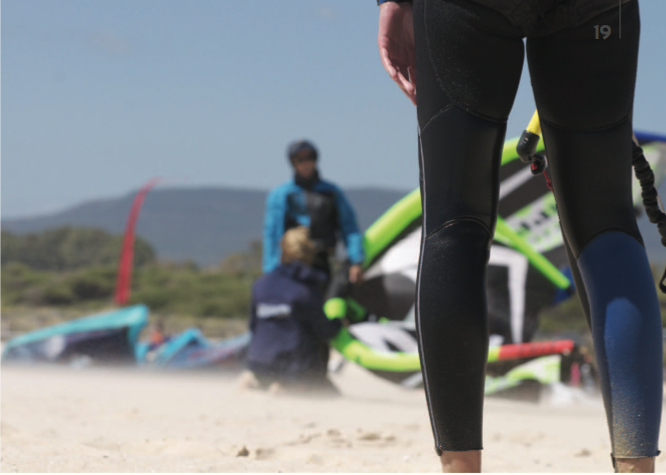
I was so tentative with the kite.
Not wanting to do anything with it ‘just in case!’ Just holding it on my own was enough. Then I’d glance around me and see young kids throwing them around without any apparent fear, kite looping and sliding along the beach, grinning from ear to ear, and my embarrassment would set in.
Man up!
I’d tell myself. But I couldn’t. What should have taken hours took what felt like weeks (that’s because it was), and we hadn’t even got to board starting yet, what would that entail? Pain, that’s what, but more about that later.
For some reason my brain seemingly would forget everything I was being taught and just when I’d think I was over the fear, it would come back, stronger. Every new day was like starting all over again. Much to the frustration of my instructors and myself too. After a lot of practice though I finally got the hang of it, and could fly the kite, without dropping it at least, now for the water!
Body dragging, in the scheme of my kite surfing career came relatively quickly to me, no problem; it was actually a lot of fun. I say quickly I of course mean slow, cities are built quicker compared to my ability to learn. But I got it, which was a breakthrough. If just a small one.
It was when I was given a board that my brain decided to stop. Getting on it or should I say in it, was fine, starting on the bl**dy thing was a very different matter.
I knew what I had to do; I just couldn’t do it.
Something inside me prevented me from carrying out the actions needed to get moving, and I couldn’t get over it no matter what or how hard I tried. Not enough power, too much power, bringing the kite down too low, not bringing it low enough, drifting it too far back not drifting it enough, you name it I did it.
My ‘Mongolian Fear’ as I like to call it came back in floods, even if I didn’t realise it, it was there and it crippled me.
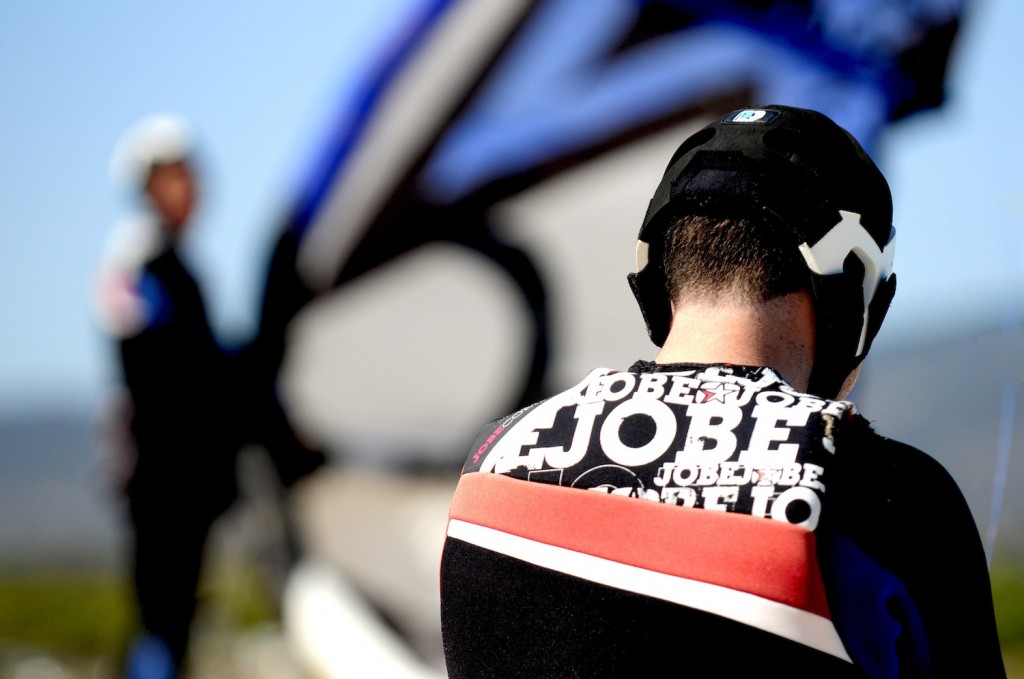
After numerous wetsuit tears, bumps, bruises, broken toes, and some mighty fine Superman impressions (Kites are my Kryptonite I’ve decided) which lasted for weeks and I mean weeks I still couldn’t get up and going.
Put this into context, a student at the school I was learning at was up and ‘riding’ by the end of their second day! Special is not the word for me. I’d like to point out that the student was a young fit teenager who was semi – pro at windsurfing and snowboarding, I’ve done neither and am a porky back pain riddled old man (30 is old in my eyes), he was always going to do better…well that’s my excuse anyway, and I’m sticking to it.
Mastering the ‘pop-up’, I use the term mastering loosely, finally came to me after what must have been the longest process in kite surfing lesson history, the ‘feeling’ came to me and my muscle memory kicked in and before I knew it I was coming up every time.
Whoop whoop!
Success at last. The trouble was I had no idea what to do next…
If you can relate to this come and join us in our Facebook group where we’ll get you up and riding in no time with expert advice, tips and tricks to get you up and riding 3 x Faster. Click the link to join…it’s FREE!
